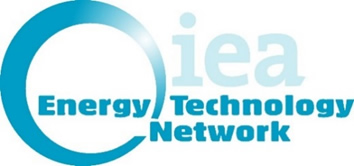About Us
Members of the Executive Committee include senior persons engaged in research, development and demonstration and persons who manage those efforts. Each institution chooses its representatives according to its own needs. Members of the Executive Committee take turns serving as host to the twice yearly Executive Committee Meeting. These meetings are the venue for face-to-face discussion. In addition, the host complements these discussions by arranging presentations from national experts and/or tours of whatever facilities the host deems appropriate. Between meetings, the Agreement’s work is furthered by its Operating Agent with the support and cooperation of the members. Are you interested in membership?

Purpose and Scope
The mission of the International Energy Agency’s Technology Collaboration Program on High-Temperature Superconductivity (HTS TCP) is to evaluate the status and assess the prospects for future use of HTS by the electric power sector within the developed and developing world and to disseminate these results to decision makers in government, the private sector, and the research and development (R&D) community.

The HTS TCP conducts outreach directed toward the following groups of stakeholders:
- Electric utilities, where decisions are made about adopting technology
- Governments, where decisions are made regarding policies, subsidies, and funding for research, development, and demonstration (RD&D)
- Professional engineering community, to which managers must turn for advice and implementation
- RD&D community, where the inclination to invent and innovate and solve complex problems resides
These four groups are sources of expertise that can inform the evaluations and assessments performed under the TCP. The TCP participants also recognize the importance of educating the next generation of students and young engineers and see this as part of their mission of information sharing.
Our unique mission has attracted worldwide interest and collaboration. This mission is particularly important now and continuing over the next decade, because HTS demonstration projects have been successfully carried out and new projects are under way in Asia, Europe, and North America. The significance of this work, with its potential of better HTS materials, conductors, products and devices, gives us much to consider at a time when governments seek impactful cost-effective RD&D and the power sector is subject to changing requirements, particularly because of the public’s desire for green power and a sustainable environment.
What's New
- HTS Readiness Map for Industrial Applications
- Annual Report 2022: IEA Technology Collaboration Programme on High-Temperature Superconductivity
- HTS Wire Enabling Market Disruption
- HTS Readiness Map for Energy Delivery Systems, Manuscript published at the Applied Superconductivity Conference 2022
- High Temperature Superconductivity Application Readiness Map for Energy Delivery (July 2021)
- Summary of High Temperature Superconductivity Readiness Map
- Collaboration with TCP Wind
- Energy Efficiency, Resilient Electric Systems, and Transportation Applications Using High-Temperature Superconductivity
- Visualize the World’s HTS Projects
- Collaboration with other IEA TCPs
- Learn how the HTS TCP is fostering the young generation of scientists
- Interested in Membership?
Events
- HTS TCP 18-20 September 2023, Geneva, Switzerland, ExCo Meeting
- IEEE CSC Events Calendar
Historical Newsletters
- HTS Newsletter: Summer 2019
- HTS Newsletter: Fall 2017
- HTS Newsletter: Winter 2017
- HTS Newsletter: Fall 2016
